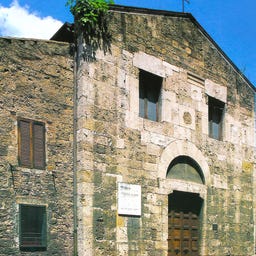Something went wrong!
Hang in there while we get back on track
Best attractions in Terni
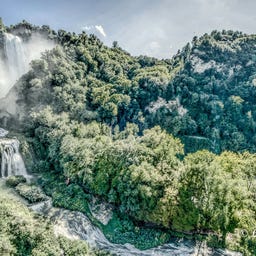
If you’re near Terni, don't miss the magnificent waterfalls. At 165 meters high, they are the tallest artificial waterfalls in the world! It’s astonishing, but this marvel is a testament to Roman engineering, created in 271 BC to drain the Velino plain. The three majestic tiers cascade thunderously, making for a breathtaking sight. A perfect day trip, especially in the summer heat, with a chance to cool off depending on the path you take. Viewpoint No. 2, for instance, might get you wet.

Nestled in the gentle foothills of the Apennines, Lake Piediluco offers a picturesque landscape that inspired 19th-century artists like Jean-Baptiste Camille Corot. Once part of the ancient Lacus Velinus, the lake, sitting at 375 meters above sea level, now draws visitors with its serene waters—perfect for water sports like rowing. It’s no surprise that Italy’s national rowing team trains here.

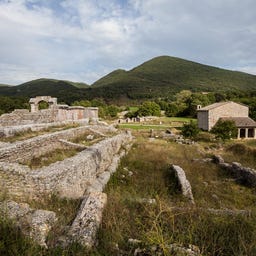
Just 4 km north of San Gemini, tucked away in the rolling green Martani Mountains, lie the atmospheric ruins of Carsulae - once a bustling Roman city, founded around 300 BC. Its rise was largely thanks to the Via Flaminia, one of ancient Rome’s most important consular roads, built in 220 BC. Today, what remains is a peaceful open-air museum where timeworn stones and crumbling arches tell stories of a once-glorious past.
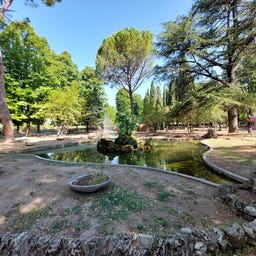
Centrally located, just a stone’s throw from the cathedral and Roman amphitheater, the Passeggiata is perfect for a leisurely stroll. The park showcases a rich botanical diversity, featuring century-old linden trees, cedars from Lebanon and the Himalayas, and rare hornbeam species. Its cool, shaded spots offer an ideal escape on hot summer days.
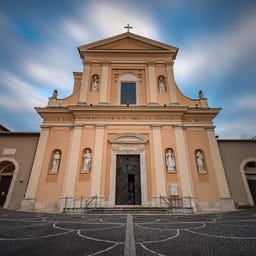
The Basilica of San Valentino in Terni sits in a scenic spot, just 2 km from the city center, on the grounds of a former Christian cemetery. This elegant Baroque church, built over the tomb of St. Valentine—the first bishop of Terni and a martyr — combines simplicity with architectural beauty. Every year on February 14, couples flock to the basilica to receive a blessing and vow eternal love.
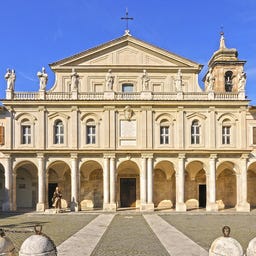
In the heart of Terni, on Piazza del Duomo, stands the impressive Cattedrale di Santa Maria Assunta, whose roots date back to the 2nd century. Built over a pagan temple, this cathedral reflects the city's tumultuous history and is a beautiful example of Romanesque and Baroque architecture. Particularly striking are the ornate façade with its portico and the impressive interiors, which house works by artists such as Guido Reni, who created the painting "Noli me tangere," and Domenico Corsi, known for the intricately carved wooden choir from 1559.

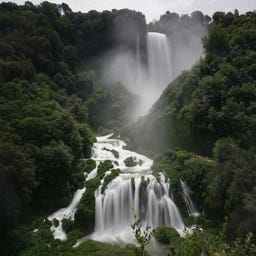
The Lovers' Balcony, a small rocky ledge carved into the travertine walls of the Marmore Falls, isn't the easiest spot to reach—but that's exactly what makes it so special. The narrow tunnel leading to the viewpoint was hewn into the rock during early 20th-century work on the Pio Canal. At the end of the passage, you're rewarded with a breathtaking view of the thundering falls—so close you can feel the cool spray on your skin.

The Chiesa di San Francesco, located on Piazza San Francesco, was built in 1265 on the site of an older chapel where St. Francis himself often preached 40 years earlier. One of its most striking features is the bell tower, completed in 1445 and adorned with colorful majolica tiles, which defines the skyline of Terni. The Cappella Paradisi, with its intricate decoration, is also a highlight. Its 14th-century frescoes of the Last Judgment by Bartolomeo di Tommaso vividly depict scenes of paradise, hell, and the seven deadly sins.

Nestled in the green heart of "La Passeggiata" park, near the cathedral, lies the Anfiteatro Fausto, a relic of the Roman era. Built around 32 AD under the patronage of Emperor Tiberius by Fausto Liberale, this amphitheater once held around 10,000 spectators. The oval structure, measuring 98 x 73 meters, hosted games and events for the ancient city of Interamna Nahars.
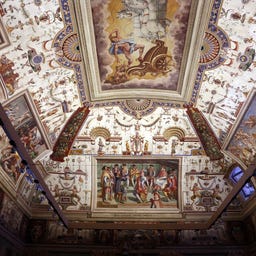
The Palazzo Spada, a stunning Renaissance building from the mid-16th century, was commissioned by Count Michelangelo Spada and stands in the heart of Terni at Piazza Mario Ridolfi. Designed by Antonio da Sangallo the Younger, the palace features strict cubic architecture, later transformed by an 18th-century arcade that dramatically altered its facades. Inside, you'll find remarkable frescoes by Flemish artist Karel van Mander, illustrating powerful scenes like the Battle of Lepanto and the Massacre of the Huguenots, reflecting the Spada family’s support for the Catholic Reformation. Today, it houses the Town Hall, where the main hall, now a council chamber, is adorned with mythological scenes such as Phaeton's punishment by Jupiter.
Thundering waters! From the heights it plunges... – this is how Lord Byron described the eerie beauty of the Cascata delle Marmore, which cascades down near Terni. From the square named in his honor, a path leads to the Belvedere Torquato Secci, offering a particularly impressive view of this roaring spectacle.

The Fontana dello Zodiaco (1932–1936) on Piazza Tacito is a beloved landmark in Terni. Designed by Mario Ridolfi and Mario Fagiolo, the fountain is a striking example of rationalist architecture, symbolizing the city’s industrial strength. Durable materials like red porphyry, Carrara marble, and stainless steel were used to reinforce this idea. The vibrant mosaics depicting the 12 zodiac signs were created by renowned artist Corrado Cagli and crafted from fine Venetian glass by the famous Salviati workshop.
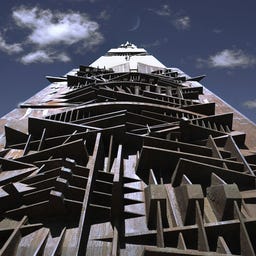
At the end of Corso del Popolo, the Lancia di Luce rises, one of Terni’s most striking modern landmarks and a favorite photo spot. This 30-meter-tall, futuristic steel obelisk, created in 1995 by renowned sculptor Arnaldo Pomodoro, reflects both the city’s industrial heritage and its vision for the future.
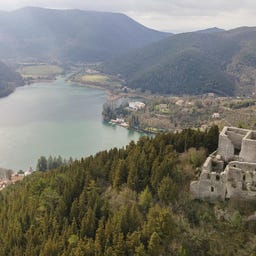
The ruins of the fortress are not a place to rush through—the slow, steady climb up the ancient path is part of the journey. Set high above a serene lake, the ruins recall old power struggles and rivalries between nearby towns. Built in the 14th century by Cardinal Albornoz, the fortress was key to defending the region between Terni, Rieti, and Spoleto. Its centerpiece is the massive pentagonal donjon, originally five stories tall. The lowest floor, once used as a cistern, was vital for wartime water storage.
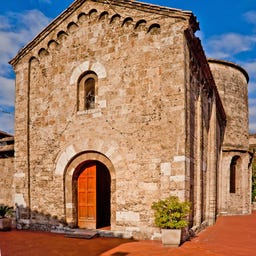
The Romanesque Chiesa di San Salvatore, located in the old town just steps from the Palazzo Spada, is among the oldest churches in the city. Its exact origin remains unclear, with estimates ranging from the 7th to the 10th century. The church was built on the remains of a Roman domus, possibly even a pagan sun temple. Some of these ancient remains are visible to visitors through glass panels in the floor.
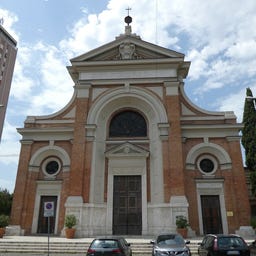
The Chiesa di Sant'Antonio di Padova, built between 1923 and 1935, was the first religious building of the modern era in Terni. Designed by Cesare Bazzani, with Aristide Leonori and Mario Mazzarra, the church is located near the train station and served the growing working-class community living around the steelworks. It houses the relics of the Franciscan Protomartyrs, revered as the first martyrs of the Franciscan Order.
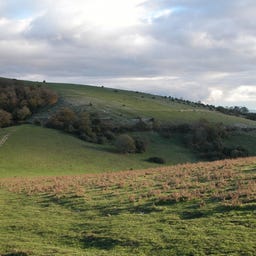
At the summit of Monte Torre Maggiore, it feels as though all of Umbria stretches out beneath you. Rising to 1,121 meters, this peak is the highest point in the Monti Martani mountains and a favorite destination for hikers. The trail starts in the charming village of Cesi.
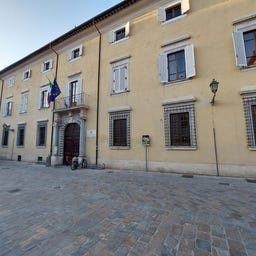
The Palazzo Gazzoli, established by Cardinal Luigi Gazzoli at the end of the 18th century, is one of the most significant noble palaces in the Umbrian city of Terni. Built in the late Baroque style, the palace stands on the remains of Roman baths and impresses with its distinctive courtyard featuring a two-story loggia and beautifully frescoed vaults. In the magnificent rooms of the Piano Nobile, you can admire mythological scenes and grotesques by the artist Liborio Coccetti.

The Chiesa di San Pietro in the historic center of Terni has a rich history that dates back to the 8th century, when Pope Zacharias met with the Lombard king Liutprand here. The current Gothic structure was built by the Augustinians in the early 14th century and features a striking gabled facade, a Gothic rose window, and a distinctive bell tower made of brick and stone.
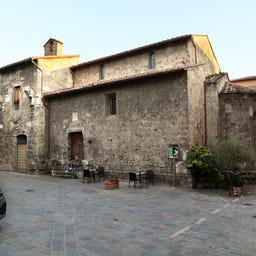
In the Umbrian city of Terni, you will find the remarkable Chiesa di Sant'Alò, an 11th-century church built on the foundations of a Roman temple. Originally dedicated to Saint Peter, the church was later dedicated to the patron saint of gold and silversmiths, Saint Eligius of Noyon, and impresses with its three-nave basilica featuring an unusual barrel vault.
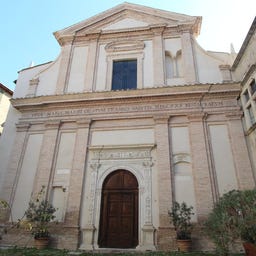
The "Collegiata di Santa Maria Maggiore" is a church in Collescipoli, a district of Terni, a monumental village of five hundred inhabitants, nestled on a hill due to its strategic position between the Via Flaminia and the Salaria, serving as an observation point for the defense of the nearby capital. "Umbria," p. 539
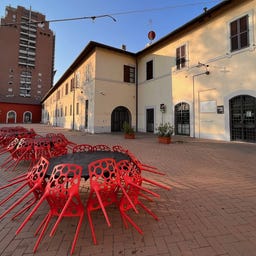
The "Archaeological Museum of Terni" exclusively collects artifacts that were owned by Elia Rossi Passavanti, a highly decorated military veteran and mayor of Terni in 1928. Upon his death in 1985, he bequeathed the palace on Via Carrara and all his archaeological finds to the city of Terni and its foundation for the recognition of deserving workers and students.
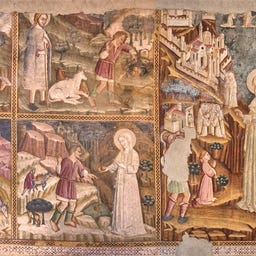
The "Church of Santa Maria del Monumento" is a religious building in Terni, located outside Porta Sant'Angelo, along the continuation of Via Cavour, next to the Municipal Cemetery, in Piazzale Caduti di Montelungo.
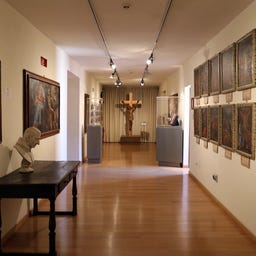
At the Museo Diocesano e Capitolare in Terni, which opened in 2005, you can expect an impressive collection of sacred art from the 14th to the 18th century, including a rare crucifix in the style of Giovanni Pisano and a significant "Madonna and Child" by Sassoferrato.
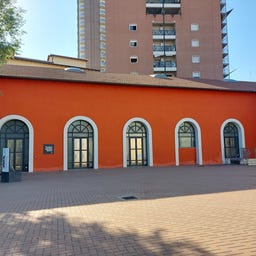
The "Teatro Sergio Secci" is one of the public theaters in the city of Terni, in Umbria, and currently the only one in operation. Located within the CAOS spaces near the historic city center, it is named in memory of one of the victims of the Bologna train station massacre on August 2, 1980.
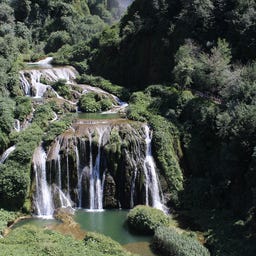
The Chiesa di Sant’Alò, tucked away on Via Sant’Alò in the heart of the city, dates back to the 11th century. It was built over a Roman temple dedicated to the goddess Cybele and is dedicated to St. Aloysius (Sant’Alò), the patron saint of goldsmiths and blacksmiths.
